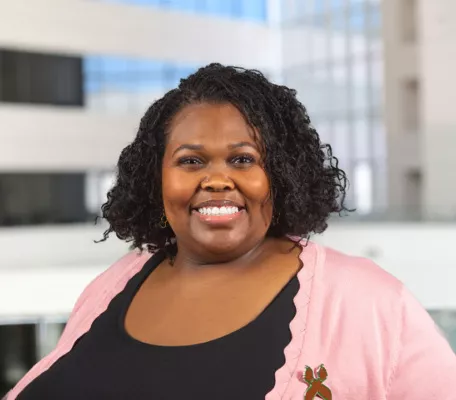
Key Takeaways
- Some states have passed laws requiring media literacy in school curriculum, but many students still are unaware that they are consuming misinformation.
- The News Literacy Project has tools to help educators and students identify accurate and inaccurate news.
- With a growing number of students using social media to get their news, and the rise of artificial intelligence in creating misinformation, media literacy is becoming more critical to developing informed citizens and protecting democracy.
From immigrants eating pets to hurricanes and wildfires intentionally created by “weather modification” systems, outrageous claims can spread online like a virus.
“There is nonstop misinformation from all sides, everywhere, 24/7,” says Eugene Kiely, executive director of FactCheck.org. “Misinformation used to be more cyclical and tied to elections, but there is no lull in misinformation now.”
Some states, including California, Delaware, Illinois, New Jersey and Texas, have enacted laws that require public school students to learn media literacy and the skills needed to identify credible information.
But as social media evolves and the rise of artificial intelligence (AI) in generating misinformation increases, it can feel daunting.
To help students wade through the flood of information, Kiely suggests that educators ask them to fact check it just as they do at FactCheck.org, a nonpartisan, nonprofit “consumer advocate” that aims to reduce the level of deception and confusion in news, particularly politics and science.
Social Media, Click Bait, and Confirmation Bias
As more young people turn to social media for news – Pew Research found 39 percent of adults under 30 get their news from TikTok – teaching them to check the source is key to helping them identify credible information.
Is it from a well-established organization? If not, better to check it. Do a Google search on the topic and see what comes up, Kiely advises.

“Do some digging,” he says. “If it's provocative and outrageous, what's known as ‘click bait,’ you should check the author or publisher.”
It is also important to learn about confirmation biases. If you tend to believe something about an issue or person, you tend to have more faith in information that backs up your belief.
For example, many people were angry about the disinformation about Haitian immigrants eating pets and the huge backlash the community of Springfield, Ohio, suffered as a result. That disinformation was spread by many, including J.D. Vance.
When information circulated about Vance renting a dog to make himself look pet friendly, many passed that on to their friends. But a thorough Google search would have shown that he actually has a German Shepherd named Atlas.
Google Fact Check Explorer is a tool educators and students can use to find debunked news reports. Simply type in the claim or rumor and see if it has been fact checked.
“Ignorance is not what we should be teaching our students,” Kiely says. “They need to be taught what happens when lies take hold – they need to understand the lessons about what happens when large groups of people believe disinformation, such as the storming of the Capitol on January 6, 2021.”
Another tool available to educators and students is Rumor Guard, which dispels viral rumors with the facts. Did world leaders sign an "Age of Death" treaty? Did a drone fire a weapon in New Jersey. Those rumors are false, and Rumor Guard offers the facts.
Protecting Democracy with News Literacy
Rumor Guard, a service of the News Literacy Project, provides recent fact checks, trending topics, factors to consider when looking at information, and how to take action against misinformation.
Brittney Smith manages school district partnerships for the News Literacy Project, which advances media literacy in K-12 education to ensure students graduate high school as well-informed, critical thinkers.
“Students are growing up in an ‘infodemic’ where they are presented with copious amounts of information,” Smith says.
But far too many students are not aware that some of the information they receive is false. That lack of news literacy, she warns, is a threat to our democracy. If students don't learn how to consume information responsibly and to think critically about it, they won't be equipped “to go out in the world and be empowered to engage in the civil life of our country and our democracy,” she says.

A popular program the organization offers educators is Newsroom to Classroom.
The program provides a directory of about 150 journalist volunteers who will meet with students in person or virtually, offering an opportunity for students to get news literacy instruction straight from the experts on dozens of topics, including misinformation, social media issues, the watchdog role of the press, the standards of quality journalism, and the First Amendment.
“Teachers find it helpful because it humanizes journalism and gives students an opportunity to engage with real journalists and ask them questions,” Smith says. “The journalist can visit in person or Zoom into the classroom and participate in the learning experience however the educator feels is appropriate.”
It's Never Too Early for Media Literacy Lessons
While most of the News Literacy Project is geared towards students in fifth grade and up, they partnered with Time for Kids to create a unit for grades 3 to 6 called “News Mattters.” Each lesson builds foundational news literacy skills and provides opportunities for students to apply those skills through discussion prompts, collaborative group activities and independent work.
“It’s never too early to talk to kids about media literacy and disinformation,” Smith says.
In fact, a recent study from the University of California, Berkeley, found that exposing young students to disinformation in a carefully monitored way can help them build a healthy skepticism to information they find online.
“We need to give children experience flexing these skepticism muscles and using these critical thinking skills within this online context in order to set them up for their future, where they’re going to be in these contexts close to 24/7,” said Evan Orticio, a Ph.D. student in UC Berkeley’s Department of Psychology and lead author of the study.
“It's not that we need to enhance skepticism, per se. It's that we need to give them the ability to use that skepticism to their advantage,” Orticio said. “In our experiments, fact-checking was very simple. In real life, fact-checking is actually very hard. We need to bridge that gap.”
